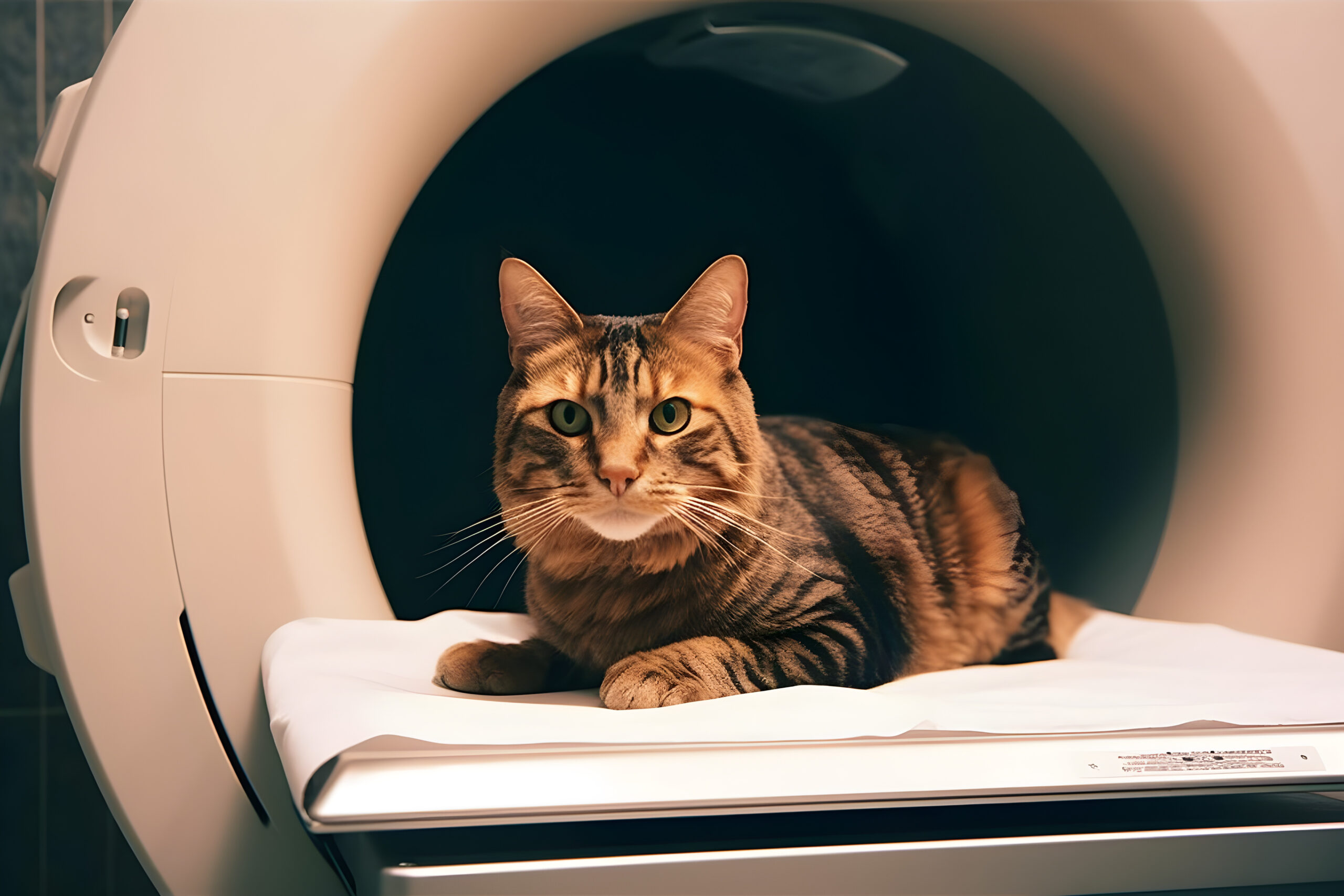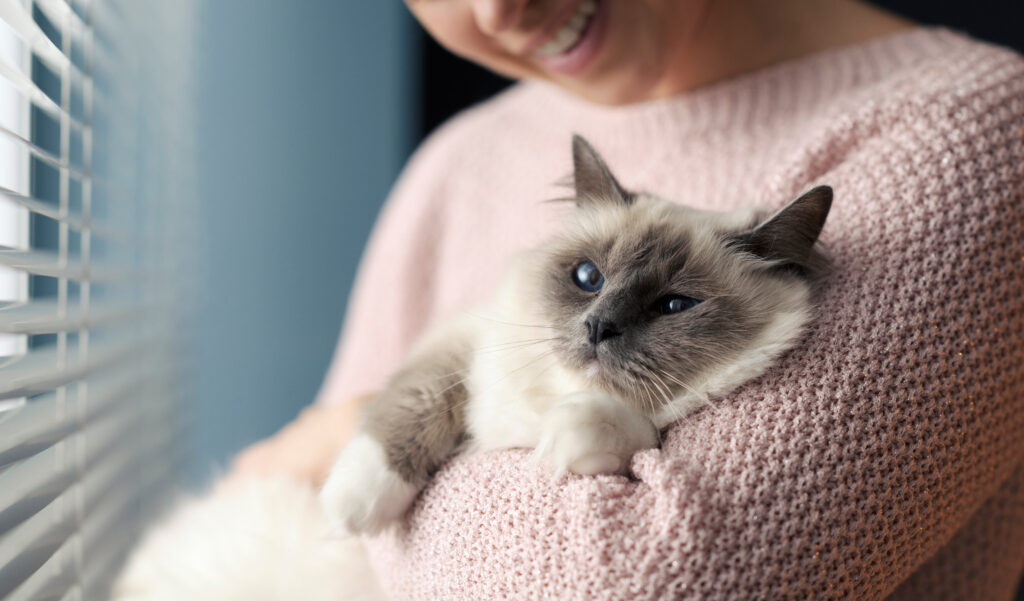Preparing for Your Feline’s Imaging Procedure
 Many pet owners are anxious about the idea of their beloved pets undergoing anesthesia, even though the risks are relatively low. This fear may stem from human anesthesia risks, which are actually higher than those associated with a CT scan for cats. Changing this perception can be challenging, as it is deeply ingrained.
Many pet owners are anxious about the idea of their beloved pets undergoing anesthesia, even though the risks are relatively low. This fear may stem from human anesthesia risks, which are actually higher than those associated with a CT scan for cats. Changing this perception can be challenging, as it is deeply ingrained.
However, in the field of veterinary CT imaging, we are able to address these concerns while still ensuring excellent care for our patients. At MV CT, we have a cutting-edge CT scanner that produces high-quality scans using only sedation. This means we can bypass the need for anesthesia and offer a solution that meets the needs of both the pet and the owner.
By utilizing sedation instead of anesthesia, we can provide pet owners with peace of mind while still obtaining the necessary diagnostic information. This approach eliminates the need to change perceptions about anesthesia and allows us to focus on delivering top-notch patient care.
Sedating Your Cat for a Veterinary CT Scan: What You Need to Know

Relaxed woman standing next to a window and holding her beautiful cat
Sedation plays a crucial role in ensuring the success of veterinary CT scanning procedures. By keeping our furry friends calm, relaxed, and slightly drowsy, we are able to obtain clear and high-quality images. Unlike complete anesthesia, sedation doesn’t render the animal unconscious but rather puts them in a state of peaceful tranquility.
The level of sedation required for each individual pet can vary depending on factors such as their health status, the area of the body being scanned, and the expected duration of the procedure. Some animals may only need a mild sedative, while others may require a deeper level to ensure they remain still and comfortable throughout the entirety of the scan.
Before administering any sedatives, our veterinary team conducts a thorough assessment of the animal’s health. This allows us to select the safest and most effective sedative for the specific needs of each pet. Throughout the scan, we closely monitor their vital signs, including heart rate, oxygen levels, and breathing rate, to ensure their well-being.
Once the scan is complete, the effects of the sedation gradually wear off over time. In most cases, pets are able to return home on the same day of the procedure. Overall, sedation is a trusted and reliable tool used in veterinary CT scanning to guarantee the comfort and satisfaction of our four-legged patients while ensuring the accuracy and quality of the diagnostic images obtained.
Frequently Asked Questions
-

The concept of finding answers after a series of questions
What is a Veterinary CT scan?
A Veterinary CT (Computed Tomography) scan is a diagnostic imaging procedure that uses a combination of X-rays and computer technology to create detailed images of a pet’s internal organs, bones, and tissues.
- Why would my pet need a CT scan?
CT scans are used to diagnose a variety of health conditions, including tumors, fractures, infections, and more. They can provide a more detailed view of the body than standard X-rays and are particularly useful for examining complex structures like the brain and lungs.
- Is a CT scan safe for my pet?
Yes, CT scans are generally safe for pets. While they do involve exposure to radiation, the levels are typically low and the procedure is non-invasive. Plus, every precaution is taken to ensure your pet’s safety during the scan.
- Does my pet need to be sedated for a CT scan?
Most often, pets are sedated or anesthetized for a CT scan to ensure they remain still during the procedure. This is crucial for obtaining clear, high-quality images.
- How long does a CT scan take?
The scan itself usually takes only a few minutes. However, the total time at the clinic may be longer due to the preparation and recovery from sedation or anesthesia.
- Will a CT scan hurt my pet?
No, a CT scan is a painless procedure. Your pet won’t feel anything during the scan. If sedation or anesthesia is used, it will be administered gently and safely to ensure your pet’s comfort.
- How do I prepare my pet for a CT scan?
Your veterinarian will provide specific instructions based on your pet’s health and the type of scan. This may include fasting guidelines or temporarily stopping certain medications.
- What happens after the CT scan?
After the scan, your pet will be closely monitored as the anesthesia or sedative wears off. Once your pet is fully awake and alert, they can usually go home. Your veterinarian will discuss the results with you and outline any necessary next steps for treatment.
The technology behind a CT scan for cats is designed with safety as a paramount consideration. The radiation levels are carefully controlled and are far below the threshold that could potentially harm your pet. The quick nature of the scan also minimizes stress and discomfort for the animal. Thus, a CT scan for cats is not only an incredibly effective tool for diagnosis but also a safe procedure that prioritizes the well-being of our feline companions.
Do you need CT imaging for your animal patients? Give us a call and we will bring our services to you!
